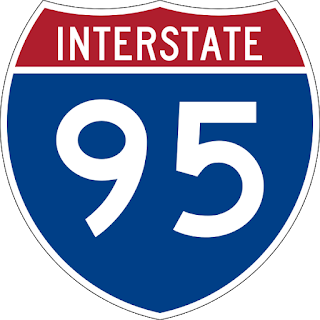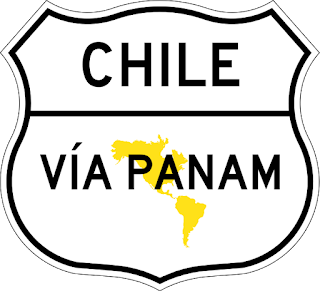This is part of a multi-part post: Muddy Waters
Part 4: Hard Again
 |
| Muddy Waters (Wikimedia Commons) |
Growing Up Muddy
Muddy Waters was born McKinley Morganfield in 1915 in to a sharecropping family in Rolling Fork, Mississippi. As a young boy he had a fondness for playing in the mud. His grandmother called him Muddy and the name stuck.Sadly Muddy's mother died when he was just three years old. His father would move to Stovall's Plantation where Muddy would grow up and like many sharecroppers children began share cropping himself for a dollar a day. As a youngster he was a big fan of Son House and at 17 he picked up the guitar and began to play. He quickly became good enough that his bottleneck delta blues guitar playing could get him jobs at juke joints and parties.
Muddy Waters Meets Alan Lomax
By 1941, Muddy had changed his last name to Waters, and had gained enough recognition that when a folklorist from the Smithsonian Institute named Alan Lomax went to Mississippi to record blues musicians for a series of recording of American folk music. Muddy Waters was suggested to be recorded. Wikipedia shares Muddy recollection of his first recording session from Rolling Stone:
"He brought his stuff down and recorded me right in my house," Muddy recalled in Rolling Stone, "and when he played back the first song I sounded just like anybody's records. Man, you don't know how I felt that Saturday afternoon when I heard that voice and it was my own voice. Later on he sent me two copies of the pressing and a check for twenty bucks, and I carried that record up to the corner and put it on the jukebox. Just played it and played it and said, 'I can do it, I can do it.'"[9]Alan Lomax must have been impressed with Muddy Waters. In 1942 he returned to record more tracks. None would be released commercially at the time. The recordings were combined and released as Down On Stovall's Plantation on the Testament label years later featured Muddy playing a deep delta acoustic blues that touched to the core of the blues experience. The recordings, being acoustic, have a different sound than he would become known for in just a few years by using an electric guitar. But his moaning blues singing style was already in place. The album starts off this weeks playlist.
Album: Down On Stovall's Plantation
- Country Blues #1
- I Be's Troubled
- Burr Clover Farm Blues
- Ramblin' Kid Blues [Partial]
- Ramblin' Kid Blues
- Rosalie
- Joe Turner
- Pearlie May Blues
- Take a Walk With Me
- Burr Clover Blues
- I Be Bound to Write to You [First Version]
- I Be Bound to Write to You [Second Version]
- You're Gonna Miss Me When I'm Gone #1
- You Got to Take Sick and Die Some of These Days
- Why Don't You Live So God Can Use You?
- Country Blues #2
- You're Gonna Miss Me When I'm Gone #2
- 32-20 Blues
Muddy Waters In Chicago
In 1943, Muddy Waters moved to Chicago to develop his career. At first he survived by getting a job as a truck driver and factory worker by day and performing as much as he could at night. Legendary Chicago bluesman Big Bill Broonzy gave Muddy some work by allowing Muddy to perform as an opening act for his shows. Then in 1945, Muddy Waters was given an electric guitar by his Uncle Joe Grant. This allowed him to be heard above the noisy Chicago crowds and provided him with a tool for developing a new sound.
In 1946, Muddy again had the opportunity to record his music, being given a session to make recordings for Columbia, who did not end up releasing the work at the time. Later that year he would have another chance. He was hired at a new label starting in Chicago called Aristocrat. In 1947, he played background for Sunnlyand Slim on a pair of tracks that again, were not released at the time.Then in 1948, things clicked. He released a Willie Dixon song, "I Can't Be Satisfied" and "I Feel Like Going Home" which sold out within a day.
"I Can't Be Satisfied" rose to number 11 on the US R & B charts and muddy Waters had achieved national fame Shortly after that, Aristocrat records became Chess records as Leonard Chess bought out his partner to attain sole ownership. The label would become a pillar in the history of Chicago blues as would Muddy's band. The band was jaw dropping in the legendary status of its members. From the website Bluescentric.Com:
In the early 1950's, Muddy Waters and his band, arguably the best Blues supergroup to have ever existed, were on top, and so was Chess Records. Muddy befriended and signed in harmonica great Little Walter, brought in Otis Spann, still one of the unmistakably best Blues pianists in existence, and Jimmy Rogers on second guitar. Leonard Chess hired delta Blues bassist Willie Dixon, who quickly became a Chess star, penning hundreds of songs for the Chess artists.
Getting the Blues Their Dues
In 1950, his signature tune, "Rolling Stone" had emerged as a smash hit, later a young blues rock band from England would adopt the name and go on to legendary status themselves. Muddy would continue to record singles for Chess through the 1950's, with many of them gaining chart position on the R & B charts. In fact, it wasn't until the end of the decade 1957 & 1959 that he failed to crack the top ten each year. Willie Dixon was cranking out the songs and Muddy Waters was cranking out the hits. 1958 saw Muddy Waters and Otis Spann touring Europe and inspiring a generation of young Brits who would go on to form such legendary rock acts as The Rolling Stones, Eric Clapton, the Yardbirds, Led Zeppelin and many more. Back in the United States, Muddy Waters appeared at the1960 Newport Jazz Festival in a band that featured Otis Spann and James Cotton. The performance caught the attention of the jazz fans in the crowd and opened the door to the acceptance of blues music among jazz purists. A major moment in music history and a powerful performance that still causes toes to tap over 50 years later, it is the next addition to our playlist.
 |
| Live At Newport 1960 was considered to be one of the first live blues albums.(Wikipedia) |
Album: Muddy Waters Live At Newport 1960
- I Got My Brand On You 4:52
- I'm Your Hoochie Coochie Man 2:59
- Baby, Please Don't Go 3:06
- Soon Forgotten 4:22
- Tiger In Your Tank 4:30
- I Feel So Good 3:03
- I've Got My Mojo Working 4:28
- I've Got My Mojo Working, Part 2 2:57
- Goodbye Newport Blues 4:49
At this point, Muddy Waters began a new phase in his career with a greater emphasis on album releases than singles. And that is where we will return to the story of Muddy Waters in just three short weeks of Old Highway Notes. Before then, join us next week as we return to old Highway 101 in San Diego County in Southern California. Then, in two weeks, we return to the coast of Florida where we will continue our trip up Interstate 95. Join us for that, won't you? Until meet again, keep your mojo workin'.
Mileage Stats
Route 66: 0 Miles/1 State/549 Tracks/98 Videos/24 Posts
Highway 101: 13 Miles/1 State/459 Tracks/156 Videos/17 Posts
Interstate 95: 77 Miles/1 State/11 Tracks/40 Videos/6 Posts
And Now A Word From Our Sponsor...
If you like what you have read here I'd like to ask you a favor. If you purchase any item on Amazon after you link to them in the Amazon banner below, I will get a little something from them. It doesn't cost you any extra and I cannot see what you have purchased.
With your help, I can keep the show on the road for you.
With your help, I can keep the show on the road for you.
You Can Give me a Karma Donation Via PayPal
Keep Traveling!
To read more Old Highway Notes, choose an off ramp and click on the highway sign:
Vista Points
Be social, Get more info, View our YouTube playlist and more

















